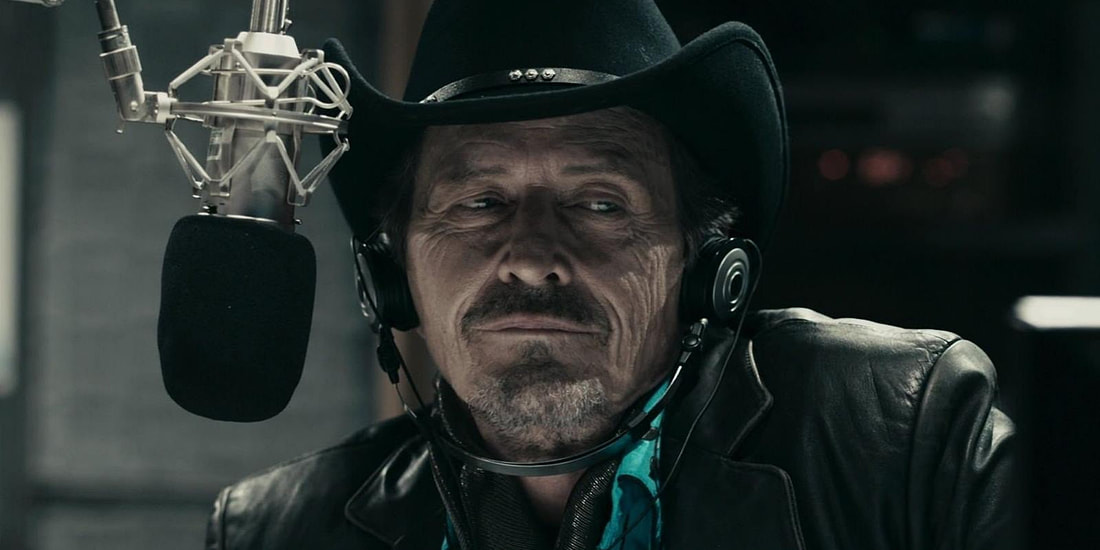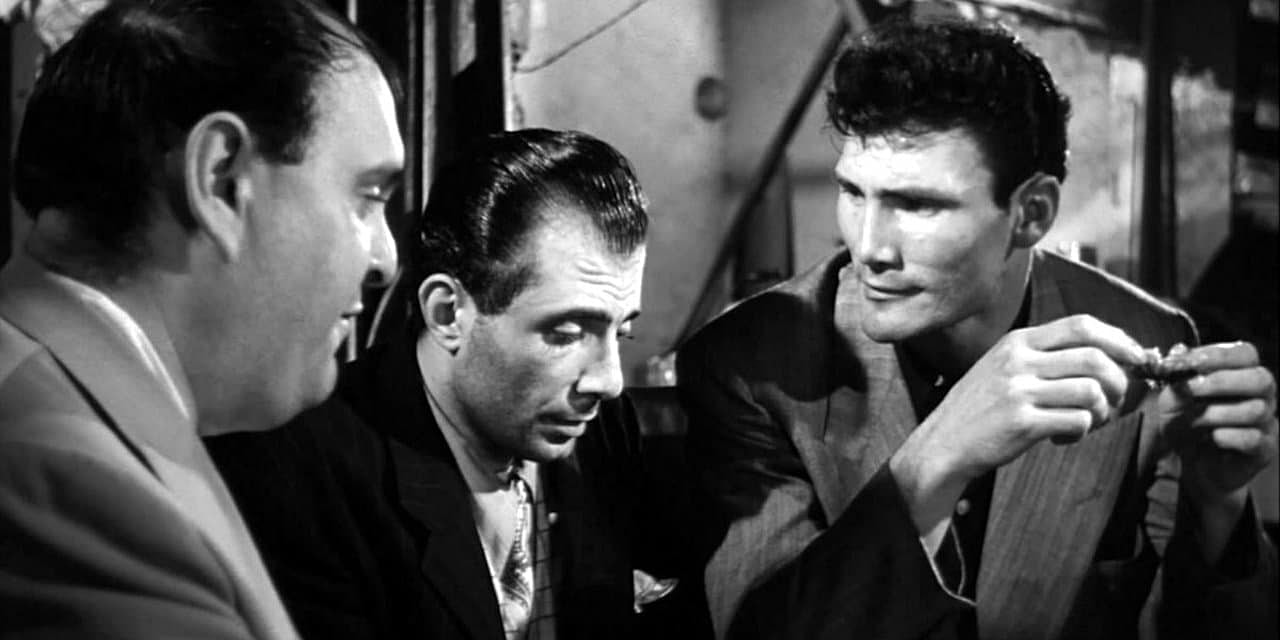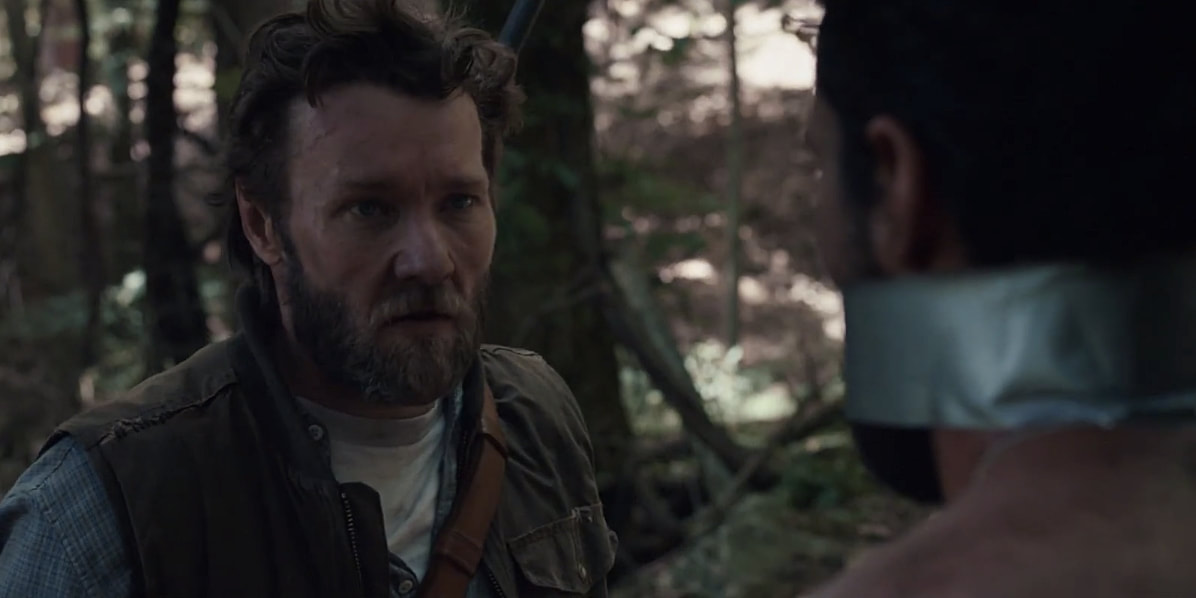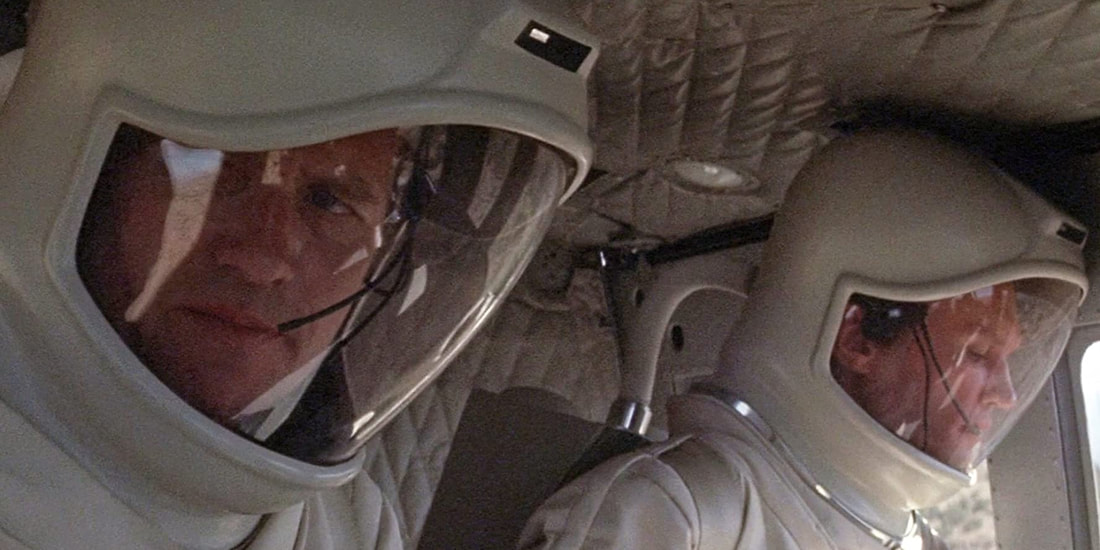Fictional pandemics have always been a fertile source of inspiration for Hollywood. They tap into primal fears like death and isolation, while simultaneously bringing out the best and worst that mankind has to offer. Coronavirus has manifested some of these fears in real life, and while it hasn’t wrought the damage of a Hollywood pandemic (thankfully), it has inspired many to sit down and watch films that speak to the current climate.
We’ve been reviewing pandemic movies on the podcast every week starting with “28 Days Later,” then “Contagion” and soon to follow with more! So, with an indefinite amount of quarantine time ahead, we decided to snap on some rubber gloves, sift through the case files, and compile a list of the ten best pandemic thrillers and infection-based films ever made.
10. The Last Man On Earth (1964)

“The Last Man on Earth” is the first and arguably finest adaptation of Richard Matheson’s novel “I Am Legend.” It follows Dr. Robert Morgan (Vincent Price), the lone survivor of a plague that has turned mankind into vicious, vampiric monsters. He scrounges for food and supplies during the day, while at night he conducts experiments in search of a cure. As time wears on, however, Morgan comes to realize that he may be too late.
The film may be hampered by its budgetary constraints (some of the dubbing is particularly rough), but directors Ubaldo Ragona and Sidney Salkow tackle the material with compassion and subtly. The black-and-white cinematography is utterly mesmerizing, hinting at the same chilly atmosphere that would punctuate “Night of the Living Dead” four years later (George A. Romero cited the film as a major influence on his zombie classic).
Then there’s Price, who dazzles as a man coming to grips with his obsoleteness. Where successors like Charlton Heston (“The Omega Man”) and Will Smith (“I Am Legend”) played up the cabin fever theatrics of the character, the notoriously hammy Price dials it down, delivering a grave performance that lingers long after the credits have rolled and the monsters have taken over.
9. World War Z (2013)

“World War Z” had all the makings of a disaster. The film was plagued by production troubles, creative disagreements, and last-minute rewrites. To make matters worse, it bore little resemblance to the best-selling novel upon which it was based, alienating fans who were clamoring for an adaptation in the first place. Somehow, the finished product deflects all these issues, resulting in a film that is both thrilling and epic in scale.
“World War Z” details the outbreak of a virus that turns human beings into feral zombies. Former UN employee Gerry Lane (Brad Pitt) is enlisted to help the government find a cure, and his efforts lead him from South Korea to a zombie-infested compound in Wales. The film ditches the meticulous world-building of Max Brooks’ novel, but it compensates with a strong supporting cast (Mireille Enos, James Badge Dale, Ruth Negga) and jaw-dropping action sequences – like the opening chase and the zombie raid in Jerusalem.
8. Pontypool (2008)

“Pontypool” is the antithesis to “World War Z”. It takes place entirely at a radio station, and the horror comes from the increasingly bizarre conversations that shock-jock personality Grant Mazzy (Stephen McHattie) has with his callers as the night goes on. These callers eventually transform into zombie-like creatures who surround the station, forcing Mazzy and the rest of the staff to barricade themselves inside.
Tony Burgess adapts the screenplay from his novel, “Pontypool Changes Everything,” which retains most of the dark comedic flourishes. There’s also special attention paid to the symptoms of the outbreak: gradually stripping away the ability to communicate through words. We won’t give away the film’s ending, but we’ll say that things take a refreshingly unexpected turn, especially for a subgenre that’s predicated on bleak outcomes.
7. Panic In The Streets (1950)

Elia Kazan is known as the director of sophisticated dramas like “A Streetcar Named Desire” and “On the Waterfront,” but “Panic In the Streets” proves that he was just as adept at making pulpy genre fare. The film chronicles the efforts of a police captain (Paul Douglas) and a Public Health Service employee (Richard Widmark) as they race against the clock to stop an epidemic of pneumonic plague. The only problem is that the carrier of the plague (Jack Palance) is a criminal who will stop at nothing to evade capture.
Kazan heightens the paranoia of the main characters through expressionist lighting and the seamy depiction of the New Orleans docks. He also utilizes non-actors and local citizens as extras, furthering the sinister notion that this could take place within the real world. The exposition regarding the origin of the plague can be a bit stifling, but one need only glimpse the opening murder scene or the climactic chase with Palance to be won over.
6. It Comes At Night (2017)

The premise for “It Comes At Night” is unnervingly simple. After a contagious outbreak ravages the planet, Paul (Joel Edgerton) and his family resort to hiding out in their woodside home. The family reluctantly welcomes another group into their midst, but as resources grow scarce and the outbreak penetrates their walls, the alliance between them and the outsiders begins to crumble.
The film is a masterclass in eliciting terror through suggestion. The tension never lets up for a second, and director Trey Edward Schults compounds this by having characters interact in dark spaces and candlelit interiors. It’s never clear what’s going to jump out or who’s eavesdropping. In the end, we’re left to wonder whether the titular “It” is the outbreak or the human frailty that drives us to destroy one another.
5. Outbreak (1995)

“Outbreak” details the efforts of military and civilian agencies as they struggle to contain an Ebola-like virus within a California town. As the death toll rises, the agencies struggle to agree upon a reasonable solution. The parallels between the film’s premise and the Coronavirus scare has led to a renewed interest on streaming platforms like Netflix, but “Outbreak” deserves to stand on its own as an exciting and thought-provoking blockbuster.
The film has its share of Hollywood flourishes, especially when it comes to the final act and the somewhat rushed conclusion. That said, director Wolfgang Petersen does a tremendous job balancing the large scale of the outbreak with the arcs of individuals who sacrifice themselves for the greater good. The cast is an embarrassment of riches, harkening back to the “Airport”-like ensembles of the 1970s while maintaining strong enough focus to make each actor feel like a crucial part. Morgan Freeman is especially good here.
4. City Of Fear (1959)

“City of Fear” is the most obscure title on the list, but it’s one that deserves to be rediscovered by film noir enthusiasts. It follows Vince Ryker (Vince Edwards), an escaped convict who heads to Los Angeles with a stolen canister of Cobalt-60. Ryker plans to pawn off the canister for petty cash, but what he doesn’t know is that its contents are dangerous enough to kill everyone in the city. If that weren’t enough, the prolonged exposure to the canister is slowly poisoning him.
The film bears a passing similarity to “Panic In the Streets,” but the crucial difference here is that it focuses on the unlucky criminal over the authorities. We’re left to squirm in our seats as Ryker unwittingly dooms himself and everyone he comes in contact with. Irving Lerner isn’t a director who gets much praise in the modern-day, but his cool, detached style lends to the film’s overriding sense of doom. He also utilizes jump cuts a year before Jean-Luc Godard was credited for the same thing in “Breathless” (1960).
3. 28 Days Later (2003)

“28 Days Later” is a terrifying zombie film because it details the simple mistakes and chance occurrences that lead to a pandemic. The beginning of the film sees a group of animal liberation activists attempt to free chimpanzees infected with a rage-inducing virus. In less than 30 days, the virus goes global, and society breaks down into pockets of scavengers and flesh-eating monsters.
Alex Garland and Danny Boyle work in tandem as writer and director. Garland’s penchant for dour sci-fi manifests in the military regime that anchors the final act, while Boyle’s optimism shines through when the characters go on a shopping spree or gleefully speed through abandoned streets. Moments like these are a reminder that, even in the worst of times, it’s important to maintain the feelings and connections that make life worth living.
2. The Andromeda Strain (1971)

“The Andromeda Strain” details the aftermath of a deadly extraterrestrial microscopic organism that crashes into a small town in Arizona. A group of scientists are assembled in a bid to identify and contain the organism, but it begins to infect the local townspeople and cause panic amidst those who can quantify the ramifications of a global pandemic.
“The Andromeda Strain” is an adaptation of the Michael Crichton novel of the same name, and like the novel, it’s considered to be one of the most scientifically accurate outbreak stories ever told. It properly depicts the efforts that scientists take in identifying and containing a deadly organism, which only makes the supernatural elements of the film all the more terrifying.
1. Contagion (2011)

“Contagion” is the ultimate pandemic movie. It combines sci-fi intrigue with factual accuracy, and a massive cast with a flowing, multi-narrative structure that manages to encompass the macro and micro consequences of a global threat. The plot concerns the spread of a virus transmitted by fomites, and the efforts taken by medical researchers to find a cure despite the pressure of a rising death toll and dwindling resources for civilians.
Steven Soderbergh is a director who’s often lauded for his attention to detail, but he outdoes himself here, crafting a film that’s careful not to sensationalize or embellish for the sake of Hollywood convention. His clinical approach suits the graveness of the events, while the superb ensemble (Kate Winslet, Laurence Fishburne, Matt Damon, Marion Cotillard, and Jude Law) ensures that we never lose sight of the film’s emotional core.
What are some of your favorite pandemic films? Have you seen any of these at home lately? Let us know your thoughts in the comments section below or on our Twitter account?
You can follow Danilo and hear more of his thoughts on the Oscars and Film on Twitter at @DaniloSCastro


